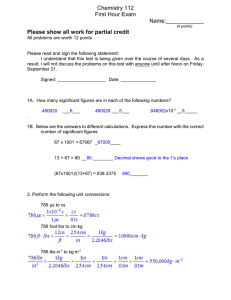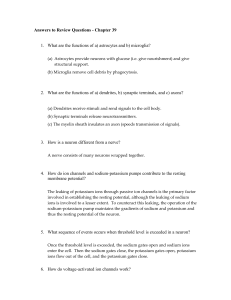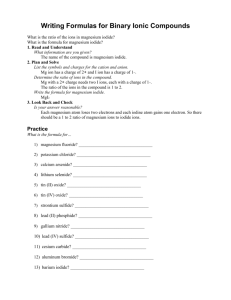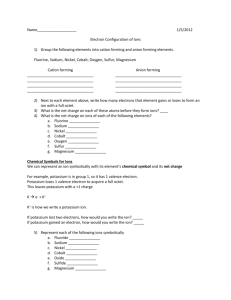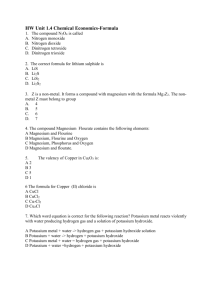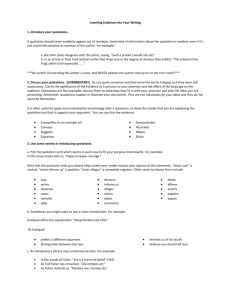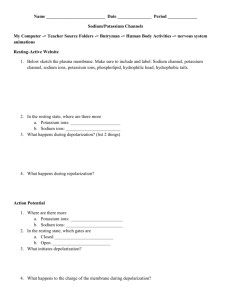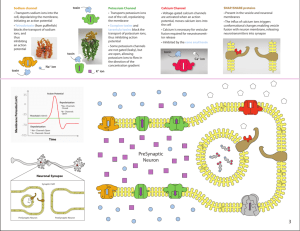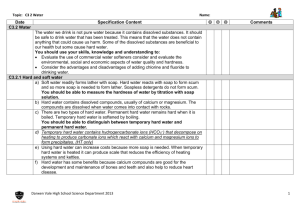Chapter 9 Question Set
advertisement
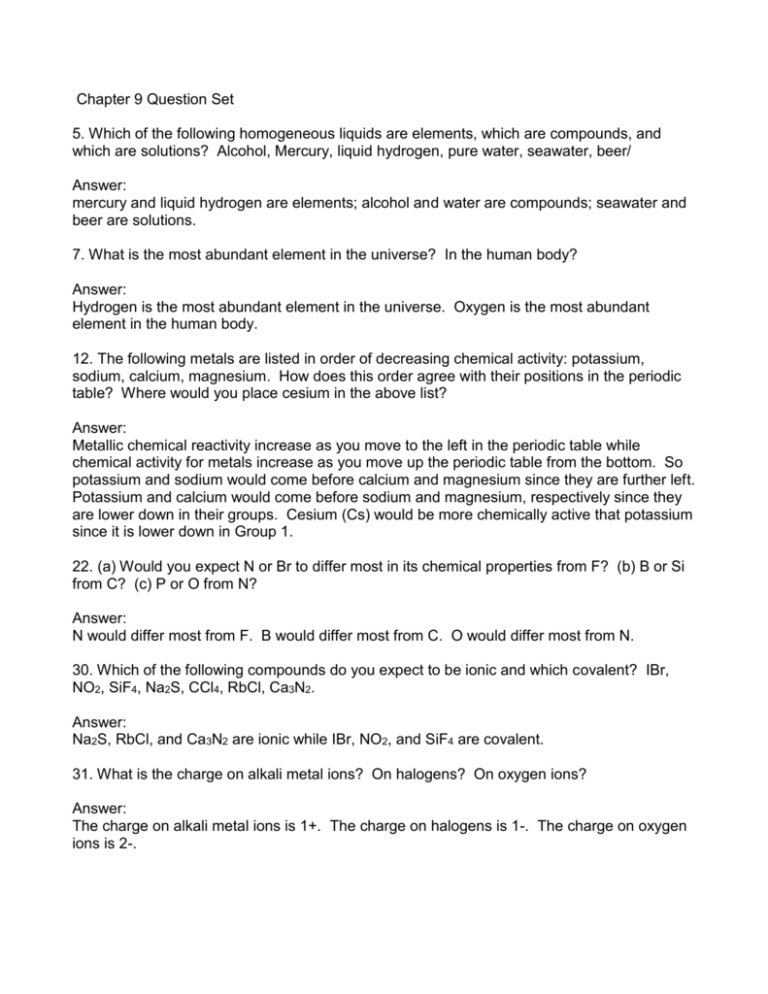
Chapter 9 Question Set 5. Which of the following homogeneous liquids are elements, which are compounds, and which are solutions? Alcohol, Mercury, liquid hydrogen, pure water, seawater, beer/ Answer: mercury and liquid hydrogen are elements; alcohol and water are compounds; seawater and beer are solutions. 7. What is the most abundant element in the universe? In the human body? Answer: Hydrogen is the most abundant element in the universe. Oxygen is the most abundant element in the human body. 12. The following metals are listed in order of decreasing chemical activity: potassium, sodium, calcium, magnesium. How does this order agree with their positions in the periodic table? Where would you place cesium in the above list? Answer: Metallic chemical reactivity increase as you move to the left in the periodic table while chemical activity for metals increase as you move up the periodic table from the bottom. So potassium and sodium would come before calcium and magnesium since they are further left. Potassium and calcium would come before sodium and magnesium, respectively since they are lower down in their groups. Cesium (Cs) would be more chemically active that potassium since it is lower down in Group 1. 22. (a) Would you expect N or Br to differ most in its chemical properties from F? (b) B or Si from C? (c) P or O from N? Answer: N would differ most from F. B would differ most from C. O would differ most from N. 30. Which of the following compounds do you expect to be ionic and which covalent? IBr, NO2, SiF4, Na2S, CCl4, RbCl, Ca3N2. Answer: Na2S, RbCl, and Ca3N2 are ionic while IBr, NO2, and SiF4 are covalent. 31. What is the charge on alkali metal ions? On halogens? On oxygen ions? Answer: The charge on alkali metal ions is 1+. The charge on halogens is 1-. The charge on oxygen ions is 2-.

